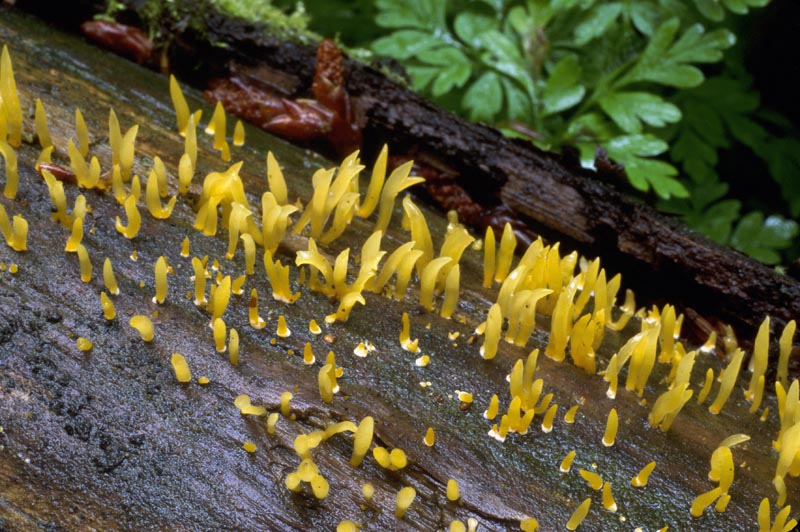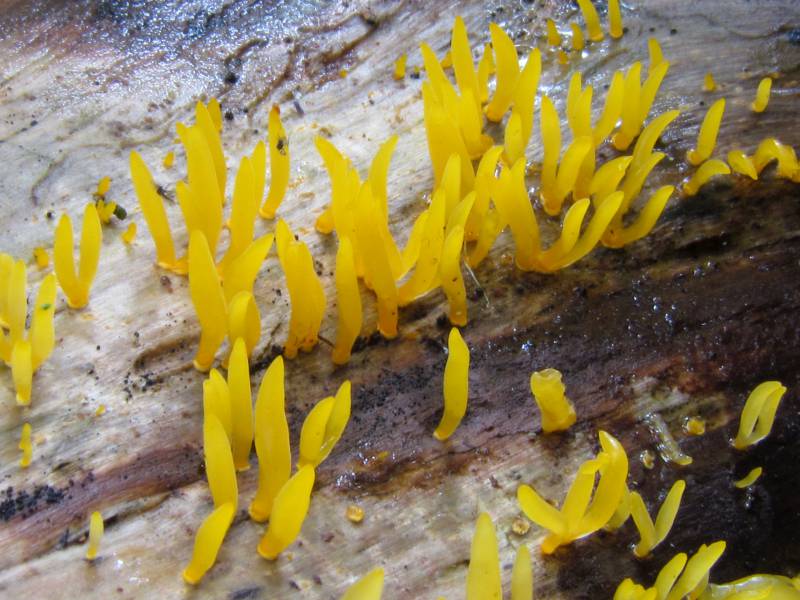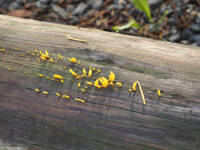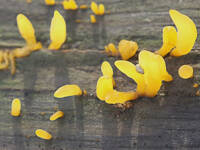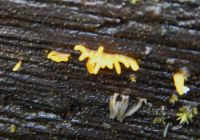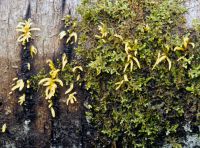Distribution: Broad
Habitat: Occurs on conifer wood
Substrate: Stumps, dead and fallen branches, and logs, in troops
Conservation Status: Not of concern
Edibility: not edible
not edible
Spores are white. Fruitbody growth of up to 0.5 inches and diameter of up to 1/8 inches. Calocera viscosa has much larger, branching fruitbodies. Calocera pallidospathulata and tropical Dacryopinax species have a similar trooping habit, but are larger and the tips are not pointed but fan-shaped or spatulate. Several smaller but rarer Calocera species also have swollen or forking tips.
Sources: Trudell, Steve and Joe Ammirati. Mushrooms of the Pacific Northwest. Portland, Timber Press, Inc. 2009. Roberts, Peter and Evans, Shelley. The Book of Fungi. Chicago, The University of Chicago Press, 2011.
PNW Herbaria: Specimen records of Calocera cornea in the Consortium of Pacific Northwest Herbaria database
CalPhotos: Calocera cornea photos

